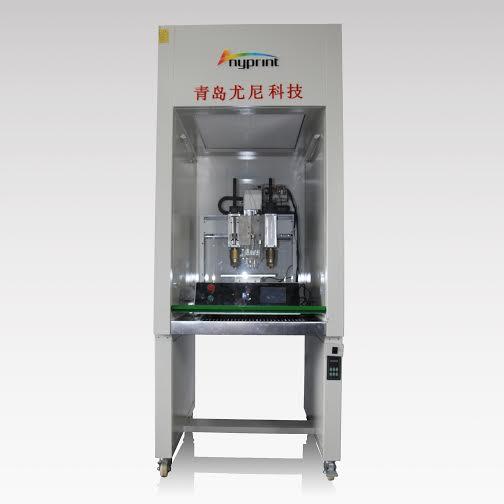
Last week we reported on a company called BioBots, a startup that has created a working bioprinter. They currently sell these machines for $25,000 but offer a beta version for only $5,000.
BioBots joins companies in the United States, such as Organova, as another player in the 3D printing of biological tissues. However, this doesn’t mean that other companies in other countries are not experimenting with this same technology. In fact, one company called Anyprint, located in China, has a 3D bioprinter of their own.
“The materials feeding printer may include bio-degradable material,” explained Steven, a representative for Anyprint, to 3DPrint.com. “The rate of degradation can be adjusted according to the patient’s condition.”
The printer, Steven tells us, has not been used on any patients as of yet, but has been utilized in a significant amount of testing. It has already been shown to successfully produce a cytoskeleton (network of fibers composed of proteins contained within a cell’s cytoplasm). “The cytoskeleton is somewhere for cells to grow into various organs,” explained Steven.
Basically, within a cytoskeleton, cells must be organized in a proper order so that they can be divided and grow into the desired organ. While not quite able to 3D print organs yet, in the future the company hopes this will be acheived.
Anyprint’s bioprinter is not being made available to anyone outside of researchers and hospitals. It was released earlier this year and is priced at only $20,000, which is relatively affordable.
As for the prospects of this bioprinter, Steven tells us that they expect to be able to print the appropriate cells in the correct order, and then transfer the printed organs into a human body. He expects a successfully 3D printed cornea to be fabricated and implanted within the next five years. “At present, the cell viability of the cornea has reached 90%,” he told us.
While we are still years away from 3D printing entirely working organs, what we are currently seeing is just the tip of the iceberg as far as bioprinting goes. Companies like Anyprint join others like Organova and BioBots as the pioneers within this space. It should be interesting to see what the future holds for this technology. Will it one day completely replace the need for organ donors? Perhaps.
What do you think? Does Anyprint’s bioprinter have potential? Discuss in the Anyprint 3D bioprinter forum thread on 3DPB.com. Check out the video below: